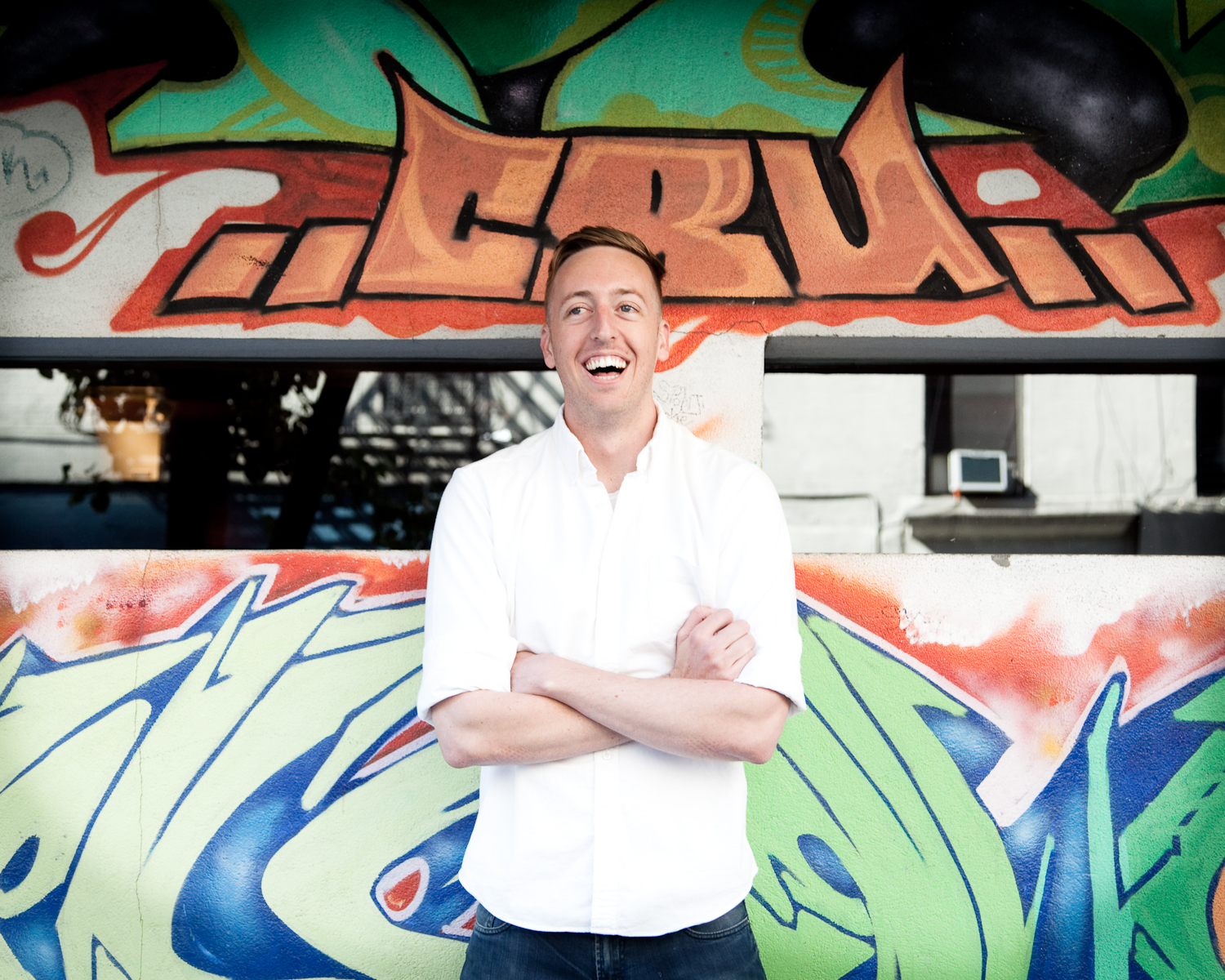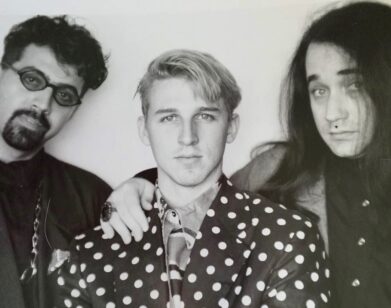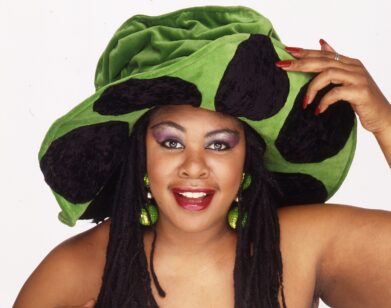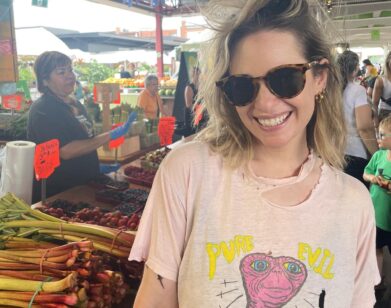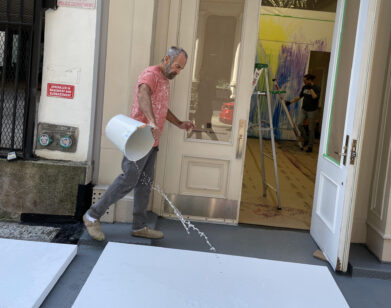Fooding and Drinking with Tristan Willey
ABOVE: TRISTAN WILLEY AT BOOKER AND DAX. PHOTOS BY THEA GOLDBERG
When Tristan Willey and Dave Arnold, who together opened the East Village bar Booker and Dax under the Momofuku umbrella a year and a half ago, set out to develop their take on the Manhattan, they took the challenge seriously.
“We spent two weeks sitting in a little lab in SoHo, being like, ‘Is this a little bit off? Is this a little bit off? Should we try one of 40 different ryes in there? And what temperature should we serve it at?,'” Willey, now the director of operations at the bar, laughs, detailing the various tools and toys (a centrifuge!) at his and Arnold’s disposal there. These efforts are mostly invisible; when you’re drinking the perfect Manhattan, you don’t much care about the why. And that’s just fine with Willey, who majored in international relations in college, cut his teeth at Crif Dogs and Kings County Distillery, and has the kind of preternatural friendliness that sets customers at Booker and Dax instantly at ease.
We went to visit Willey at Booker and Dax, located on the same corner as Momofuku Ssam Bar, on a sunny Monday morning to chat with him about his role in this weekend’s Le Grand Fooding event at Res in Brooklyn. We’re documented fans of Le Fooding, which combines food, culture, art, and music in consistently exciting and unexpected ways, and this year’s event promises to be no different: Le Fooding is inviting diners to a “Time Mach’Inn,” designed to revisit the last 20 years of trendy culinary culture. It starts with a ’90s fusion-cuisine first course by Peter Gordon of Auckland’s The Sugar Club, followed by an early-’00s bistronomy entrée by Yves Cambdeborde of Le Comptoir du Relais in Paris, and concluding with a very of-the-moment farm-to-table tomato-and-honey dish by Frank Castronovo and Frank Falcinelli of New York’s own Frankies Spuntino. Each dish is accompanied by an appropriate cocktail featuring Jameson whiskey (whose funding allows Le Fooding to reverse its proceeds to benefit City Harvest), which is where Willey comes in—he was charged with the enviable challenge of designing a whisky cocktail to complement the big, robust flavors of Cambdeborde’s roasted veal.
The Booker and Dax development lab still exists, by the way, though it’s changed locations—these days, you can find it in an old Lower East Side copy shop that still has a sign on the glass storefront reading “Five-cent copies.”
ALEXANDRIA SYMONDS: What’s your day-to-day here like?
TRISTAN WILLEY: The bar’s been open for a year and a half now, and it has its own managers, and the staff has been here for over a year, so it doesn’t really need a lot anymore, which frees me up to do the really fun things… like admin!
SYMONDS: [laughs]
WILLEY: So we do things like work on somebody’s visa, because I have an intern from Ireland who is working on making sure everything is on the up-and-up, which is really fun. But then I also get to spend all the time in the afternoon alone at a bar, doing cocktail development.
SYMONDS: Let’s talk about the Grand Fooding event. You’re making a cocktail to accompany the main course, the Gastronomy section, which is supposed to represent the period from 1998 to 2007. Where in your career and your life were you at that time?
WILLEY: Well, it’s funny, because during that time I was in middle and high school.
SYMONDS: [laughs]
WILLEY: [laughs] Wasn’t drinking a lot. I had absolutely no idea what was going on. I was a busboy at a restaurant, keeping my head down. And at that time, I was in New Mexico. I would have said that they weren’t on that kind of page for food, but looking back on it, some of the restaurants that I was working for back then, just waiting tables, were doing some really cool stuff that really almost kind of quintessentially fit into that setup.
SYMONDS: Really?
WILLEY: Yeah. It’s easy when you’re not in New York City, London, or Paris to kind of idealize what’s going on in a movement—like, you get to see what everyone else is doing around the world, and you have to manipulate it, to be working with the epitome of it. When you step away from it, a lot of people are doing things that are just exactly what the trend is at the time, because it’s all they have to go by. They’re not being exposed to all these different variants and that kind of stuff, because you may be the only restaurant in the town doing this.
SYMONDS: It’s like spontaneous generation.
WILLEY: Yeah, it’s like, I get to read Gourmet Magazine, I get to read Food and Wine, and that’s all I know about what’s happening, because I don’t get to spend every weekend in New York City. I’m in Albuquerque. And so they’re making a lot of the quintessential dishes that are just really appropriate to the style of the time. So we did get to see a lot of that. The restaurant style that I was working at then kind of idealized what that was, which was whole, hearty dishes. I work at a restaurant called Savoy in Albuquerque, which actually, looking back on it, is phenomenal. I didn’t know it at the time, having never been exposed to anything else—but they were clean, and they were creative and great. They were doing things like braised veal, and they had wonderful lovely vegetables on the side that were done in the same kind of characteristics that you deal these beautiful sauces. And it felt very rustic and old-school to me at the time, but looking back on it, it was exactly of the time.
SYMONDS: How would you characterize the people who are coming to Booker and Dax, now that it’s been open for a while and you’re developing a crowd of regulars beyond just people waiting for their Ssam Bar reservations? What are they looking for out of their experiences?
WILLEY: Well, at first, we were almost misguided in our own rules when we opened this, between Dave and I—that’s Dave Arnold, who does all the science stuff, and we wanted to play up that aspect of it. We thought that was going to be our drive, advanced cocktails and a real showcase for new techniques, and almost immediately, we realized how mistaken we were with that, and how even more important than that was just to be a bar. Which turned out to be the best possible result. You get to be cozy and loud and hang out, and it’s really casual. We turned out to be more of a neighborhood bar than I ever thought it would.
SYMONDS: How do you balance out knowing that as the bar’s identity with your own experience with experimentation and continually wanting to keep things fresh and try new stuff?
WILLEY: We always try and do it. That came down to a few things—we kept forcing new things, and realized that a lot of people weren’t coming in because we didn’t have their favorite things on the menu anymore, or we were pushing things too much. Nowadays, rather than force and drive things constantly, we’re focusing on what we can do just better. And when that time comes and we make something better, we put it on the menu. And we don’t talk about it as much anymore, which is great. We get a new server and I have to convince them that the people at the bar and at the table don’t want a lengthy explanation of an ice dilution curve.
SYMONDS: [laughs]
WILLEY: We have that [knowledge], but people actually don’t care that much, they just want to go out and have a drink. And I don’t blame them. It’s come down to it, more just we’re going to put what we can on the menu, we’re going to try to up our game behind the scenes, and then let the drinks speak for themselves. A lot of times it goes unnoticed, unless somebody asks, “What’s your new drink? What’s going on? Tell me about this.” We get a few customers where that’s their goal, to learn about it, and the rest just come to get a drink.
SYMONDS: Do you feel like that kind of demand for knowledge is something that’s happened in food culture but not yet happened in cocktail culture? I feel like people who go to Ssam Bar want to know every single thing…
WILLEY: Yeah, where is it sourced, and what the ingredients are about, and how do you do this, and how’s it funky and different?
SYMONDS: “Convince me that coming in here was worthwhile.”
WILLEY: Yeah, exactly. You get people who are very interested in cocktails. They’re not necessarily bartenders or even people in the industry, they’re just curious about it because all the information is so readily available about everything now, you can go home and read about it. You get a unique opportunity, as somebody who’s looking for an explanation in a bar, to face the person who’s making the drink. It can be intense. Some people have taken drinking to an overcomplicated state, and they come in quiz the [bartender] on how deep their knowledge is.
SYMONDS: Momofuku has been involved with Le Fooding events before—is that right?
WILLEY: Yeah, for sure. They’re regulars at the bar, and it’s just a good group of people.
SYMONDS: So it wasn’t any kind of formal approach?
WILLEY: No, it was the best way—you get to know somebody, and then you realize you want to collaborate with them or you want to get on board with what they’re doing. It’s cool when you have a friend and you realize you can support their work.
SYMONDS: When you decided to work together on this event, did you do a lot of research into what was happening 10 years ago in cocktails? How did you decide what to make?
WILLEY: Cocktail culture is steeped in history, so you can’t really avoid it. Every recipe has a hundred years of history in it. There’s a passion for this legend of cocktails and spirits and that kind of stuff that really is deep in our culture. You’ll see it when you go to a cocktail bar and everyone’s wearing braces and vests. It’s all a throwback.
SYMONDS: It’s funny especially because it seems like that kind of emphasis on the history of cocktail culture really came to a head about seven, eight, 10 years ago, so to be looking back at that now is a weird meta-historical thing to be doing.
WILLEY: Right—because, let’s be honest, it wasn’t that long ago. It feels funny talking about this stuff, because you’re like, “Well, you know, in the 1990s when they were drinking this…” And I’m just like, “In the 1990s, I was four.” When I started to first bartend, you get ingrained with this passion to rebel against the bad stuff, the crappy stuff, and people are just now starting to actually treat cocktails like a culinary art, versus Sprite and vodka. There’s still those lingering remnants of poor ingredients that people are almost overly rebelling against, like overcompensation so people know you’re taking it seriously. There’s so much backlash just for the sake of being like, “We are legitimate.” I had to step back and be like, what was I trained to not make? And did it come from that era, and why was it bad, but how can we capitalize on that?
SYMONDS: So tell me about the drink that you designed. Is it just one?
WILLEY: I was able to focus on one single thing. I don’t like to pair cocktails with food. There are rare exceptions where they work beautifully together; and I am a sucker for a good martini and some oysters or seafood, that kind of stuff. But a lot of times, the flavors are so potent in cocktails that they just clash. Whether they work together or not, they’re just so strong, and they’re small portions. It’s not like you can take a swig of refreshing beer and after a hearty bite of food—there’s a lot of alcohol concentrated in a cocktail.
SYMONDS: Had the menu already been designed and come to you?
WILLEY: I got a preview, which was kind of nice; the chef at Le Comptoir sent over an idea of what he was going to do, which involved big, rustic flavors: big cuts of meat and some hay-smoked potatoes. I’m working with Jameson, which is great because it’s easy to work with and it’s a flavorful thing, but it’s also strong, and it’s whiskey in a midcourse. It’s got to play well and you’ve got to be able to continue eating, drinking, and tasting again and again afterwards. So I can’t just destroy—I can’t conquer this drinker and be like, “Okay, you’re not going to taste anything.” So I had to step back and think about, first and foremost, how can I make a drink so that people drink it no matter what it is and are okay to keep going afterwards.
SYMONDS: [laughs] That seems like a tall order.
WILLEY: Well it’s just so that the night’s enjoyable, first and foremost, because that’s the goal, even it you want to stick to a theme. If something is funny and thematic, great. But if it ruins you for everything else, awful. What I generally like to drink is beer and wine, and so my goal is to make something that’s light and refreshing and effervescent and delicate, so that you can drink it by the gulp if you wanted to. One of my favorite things going on right now is actually a classic movement—you see it more and more in Japan—where it’s just a whiskey highball. You get a little bit of whiskey and a lot of soda water; it’s very low in flavor, because the whiskey is spread out over so much water. You get to taste all the delicate natures of it, but yet also get to just enjoy it and drink it. It comes off as refreshing rather than boozy. It pertains, it’s an old-school cocktail, and it’s something that’s stood the test of time, and people don’t really drink it anymore, unless you’re on a diet. It’s something easy that you can step back from and say “Oh, that’s delicious.”
SYMONDS: Because usually when you order a whiskey and soda, it’s not delicious. [laughs]
WILLEY: No, no. It’s something just to slow you down. You’re adding soda just so it’s going to take you a little longer to drink this. But it is beautiful, and it’s delicious. They sell this in a can out of vending machines in Tokyo, which is awesome. We infused the whiskey with a little bit of hay, so it’s really grassy, a kind of golden, light flavor, and mix in the right amount of dilution, and then carbonated the whole thing like a champagne, so that it drinks basically like a beer. Now we’re going to put it in a flute, it’s basically like a big tall pull of sparkling, light-colored Jameson and soda, with a little bit of black pepper. So it’s savory, it’s light, it hopefully mixes with the dish.
SYMONDS: It sounds delicious.
WILLEY: I hope people can just drink four of these and not even notice. [both laugh] I don’t want them to think too hard about it, I just want them to sit down and have a good drink with their meal.
SYMONDS: Where do get your hay?
WILLEY: That was the biggest challenge ever.
SYMONDS: [laughs] I can’t even imagine. I was thinking about rustic flavors, and I was expecting you to say blueberry or something, which goes with pork and venison.
WILLEY: Yeah, no, seriously, I went through the same thing. And I thought, “Chefs use hay all the time. There must be something like a purveyor.” It’s like artisan hay or something. So I started calling purveyors and they’re like, “We don’t have hay.” And so I started calling chefs and they’re like, “No, man, if you need hay, you go to a pet store. There’s one on Ninth…”
SYMONDS: [laughs]
WILLEY: And I couldn’t bring myself to do it! I can’t go into a pet store, even though we were just talking about hay, and be like “I’m going to infuse this in your drink.” I felt like there’s no accountability for where this hay is coming from. And then I had a moment, I called Dan Burns out at Luksus and it was like, “Dan, I really need hay right now. Do you have any on your menu?” And he was like, “Sure do!,” and I was like, “Can I get a handful?” He was able to find me hay and let me have some to play around with. And I didn’t ask him where it came from. I had full faith in him as a chef, where he’s using the right stuff. I got over there and it’s clean and pretty, and he’s like, “This is hay,” and I said, “I’m going to take some now, thank you,” and I didn’t ask any other questions.
SYMONDS: Oh my god, that’s so funny.
WILLEY: I wanted to ask to one of our chefs and be like, “You smoke potatoes in hay now, which variety do you like? Do you like this over that?” Which is usually what they come to me with, because I’ll ask all of our chefs different questions about the ingredients, and they’re like “Well, what are you looking for, what character do you want to find in this?,” and we play together, and see what we can figure out. This time it was like, “It’s hay. It’s just straight-up hay.”
LE GRAND FOODING 2013: TIME MACH’INN WILL TAKE PLACE THIS FRIDAY AND SATURDAY, SEPTEMBER 27 AND 28. FOR MORE INFORMATION, PLEASE VISIT ITS WEBSITE.

